The Spectacle of War in Woodblock Prints
When late 19th-century Japan fought China for control over Korea in what became known as the First Sino-Japanese War, its explosive naval and land battles offered printmakers sensational, politically gripping new subject matter.
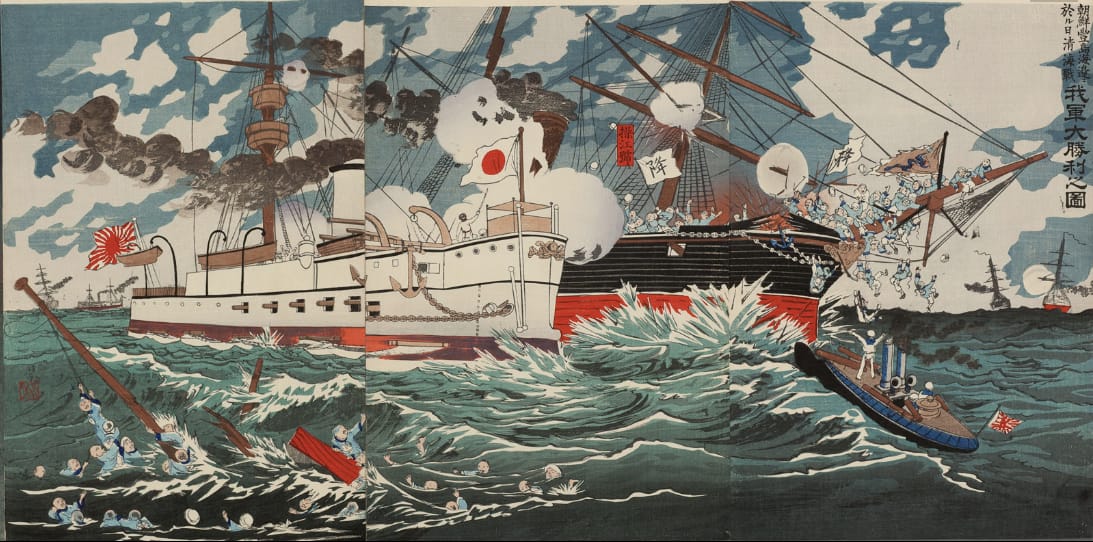
When late 19th-century Japan fought China for control over Korea in what became known as the First Sino-Japanese War, its explosive naval and land battles offered printmakers sensational, politically gripping new subject matter. As a result, the traditional woodblock publishing industry known as ukiyo-e — then stagnating, due to the advent of lithography and photography — began to thrive.

The Mead Art Museum at Amherst College now features an expansive collection of these historic Japanese prints in its exhibit Pain’s Pyrotechnic Spectacle, which also includes a digital platform. The show’s title refers to an 1896 reenactment on a Manhattan beach of a battle that had taken place just a few months before in Korea, revealing the far-reaching intrigue that helped fuel the demand for such artwork. It also helped that, in 1872, Japan repealed a strict law forbidding artists from depicting current events. A morbid public curiosity and a favorable artistic climate converged to create a genre of war prints known as sensō-e, which would soon reappear during the Russo-Japanese War.
Aside from 15 woodblock prints, the show includes 35 never-before-seen images by Kobayashi Kiyochika, bound into an accordion-like book called A True Account of the Sino-Japanese War, published by Daikokuya Heikichi around 1895. The album is unusual, and not just because no identical copies have ever been found. As co-curators James Kelleher and Bradley Bailey explain in their online statement, such large series simply don’t exist: “Each print would be a representation of a specific battle, or act of heroism, or exotic landscape. By compiling a large number of prints into one volume to create a narrative, the album itself becomes a spectacle.”
* * *

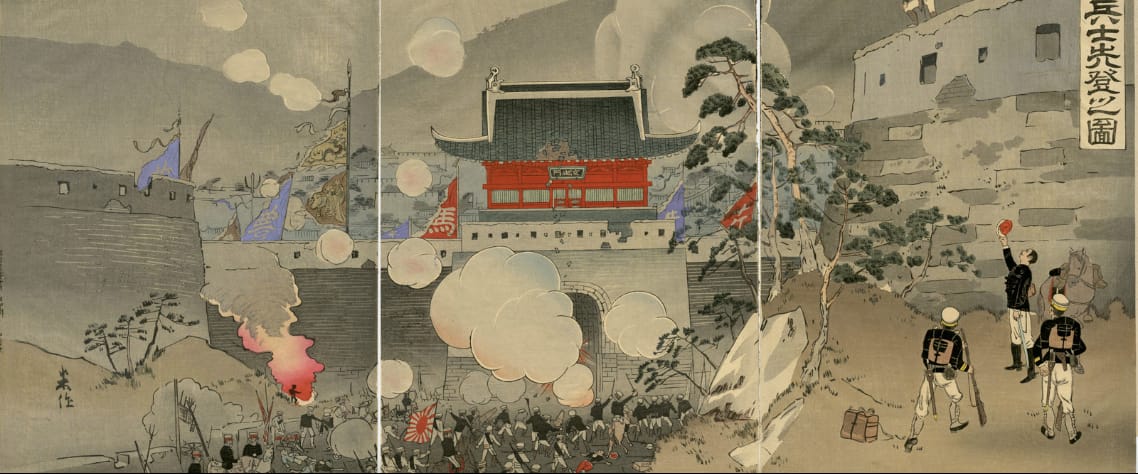
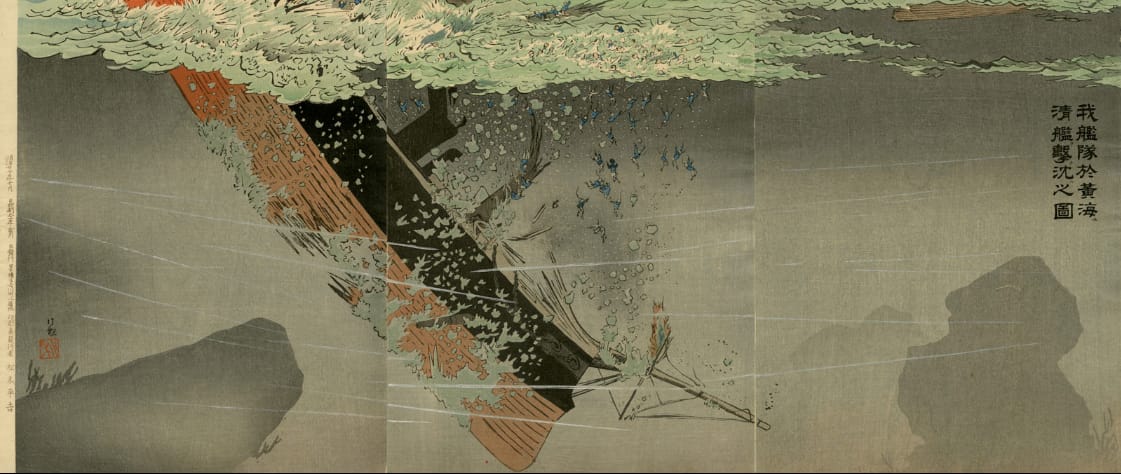
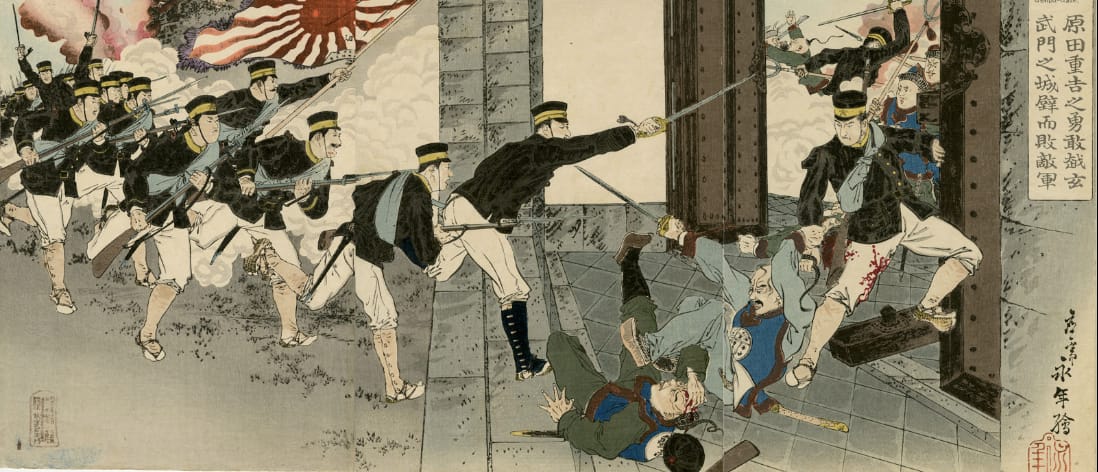
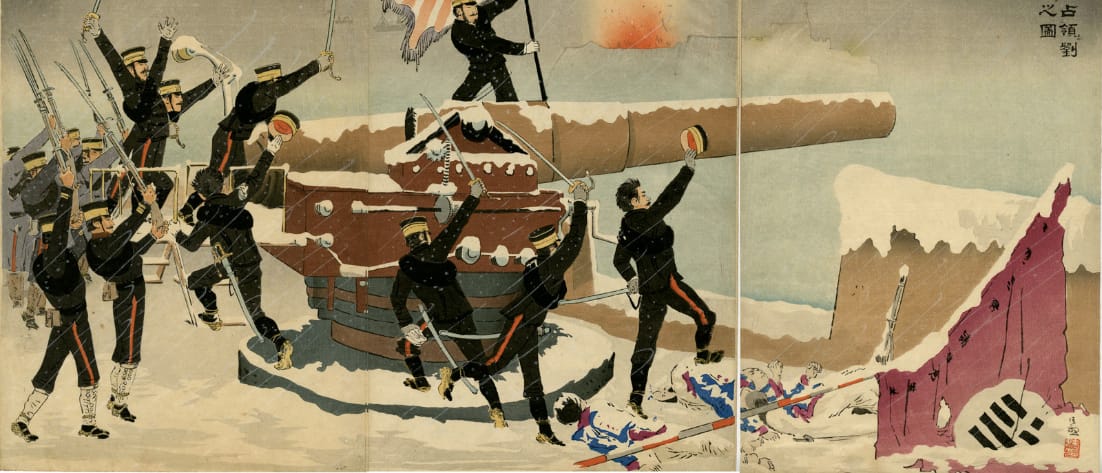


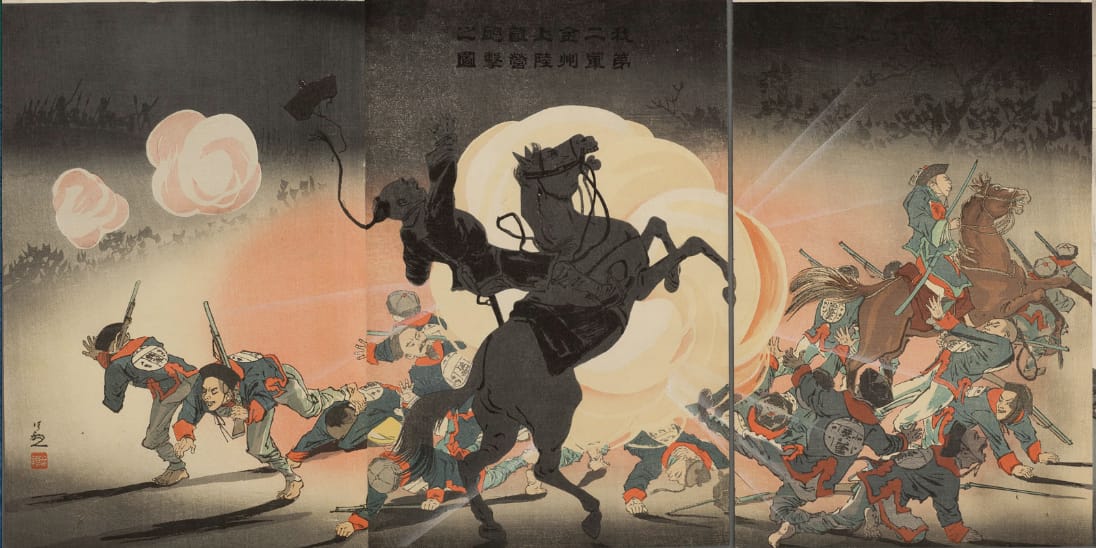
Pain’s Pyrotechnic Spectacle is on view at the Mead Art Museum (41 Quadrangle Drive, Amherst) through January 4, 2015.




